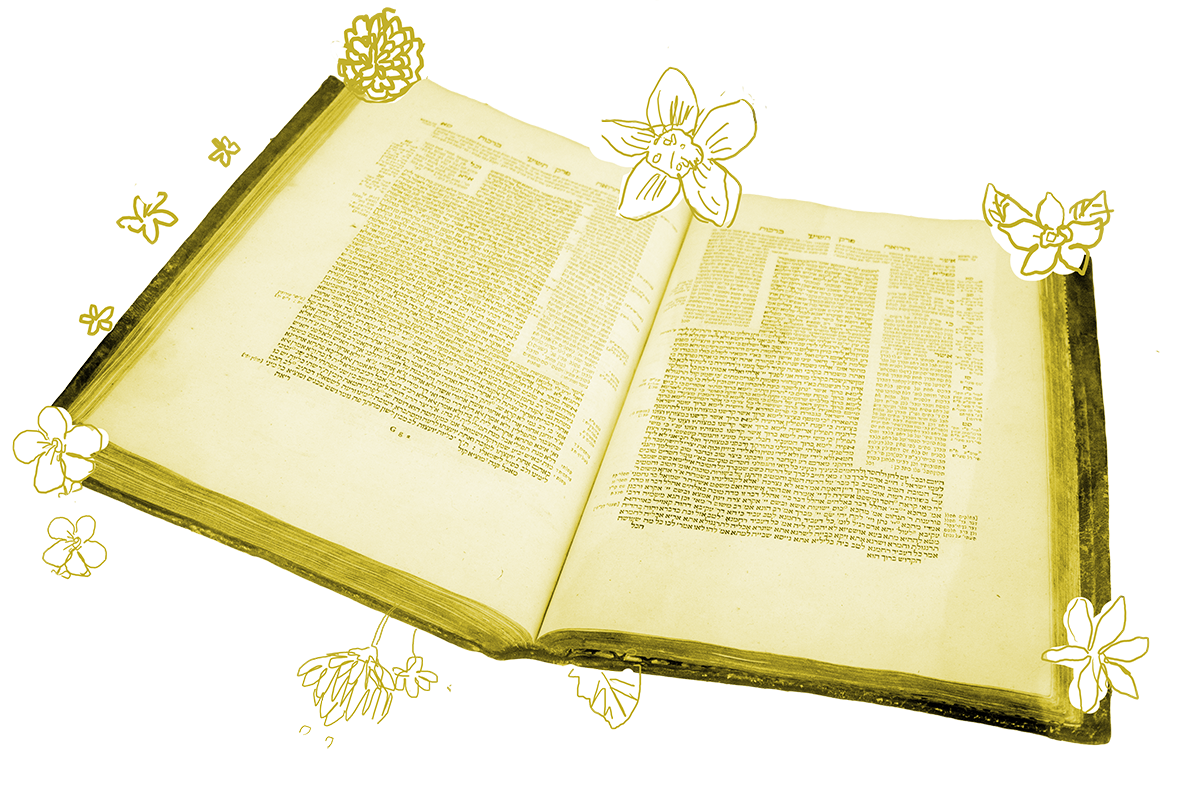Today’s daf is pretty much one long sugya that runs from the top of 69a to the bottom of 69b and spills over onto 70a. It covers a wide range of topics related to consecrated items, produce and animals earmarked for the Temple. In many cases, the rabbis describe how these forbidden items were demarcated, giving us a window onto ancient labeling practices.
First, some background on what requires demarcation. Leviticus 19:23–25 describes restrictions on fruit grown in an orchard:
When you enter the land and plant any tree for food, you shall regard its fruit as forbidden. Three years it shall be forbidden for you, not to be eaten. In the fourth year all its fruit shall be set aside for jubilation before the Lord; and only in the fifth year may you use its fruit …
The Torah’s law of orlah holds that tree fruits may not be consumed until the tree is three years old. But what of the restriction on the fourth year fruits that must be “set aside” in this passage? The rabbis understood this to be a kind of tithe (akin to ma’aser sheni), and that the fruits — in their interpretation, both tree fruits and fruits of the vineyard — were consecrated and eaten only in Jerusalem.
With your help, My Jewish Learning can provide endless opportunities for learning, connection and discovery.
To prevent people from eating or deriving benefit from fruits in their fourth year, which is prohibited unless the fruits are redeemed, the rabbis required that people mark them. Mishnah Ma’aser Sheni 5:1 describes the method of demarcation, quoted on today’s daf with explanation provided by the Gemara:
“With regard to a vineyard in its fourth year, they would demarcate it with clods of earth (bizkokot).” — Earth is used because a vineyard in its fourth year is like earth: Just as with regard to earth there is permission to derive benefit from it through its cultivation, so too, with this fruit, when it has been redeemed by means of coins, it is likewise permitted to benefit from it.
The word bikzozot, which is translated here as “clods of earth,” draws commentators’ attention and is said to be reddish dirt that’s distinguishable from the soil around it. As a result, passersby will be aware of the vineyard’s off-limits status, and clods themselves are a reminder of the fruit’s redeemable status — meaning one can pay money to the Temple in exchange for eating this produce.
As we’ve previously noted, fruit from trees that are less than three years old are known as orlah and are also prohibited (and can’t be redeemed — meaning the owner can’t give money to the Temple in exchange for eating the fruit). To make sure we don’t take fruit from them, how are they marked?
“And orlah is demarcated with potsherds,” — This particular distinguishing mark is used because orlah is like potsherds: Just as no benefit is derived from potsherds, so too, no benefit may be derived from this orlah.
This fits nicely. You can’t make use of broken pieces of pottery, just as you aren’t permitted to use grapes that are classified as orlah. For this reason, potsherds are an excellent marker of a vineyard that is completely out of bounds — making use of something otherwise useless, and poetically reminding us of the status of that produce.
Finally, the mishnah imported from Ma’aser Sheni tells us how to demarcate a grave, in order to prevent a person from accidentally contracting impurity by treading on it. Today’s daf also comments on this as well:
“And an area of graves is demarcated with lime,” — The reason this particular distinguishing mark is used is that lime is white, like bones. The mishnah further states: “And one dissolves the lime in water and pours it out around the gravesite.” — This is performed in order that the lime should be whiter.
Lime, a pale, calcium-rich mineral that apparently becomes even whiter when dissolved in water, serves as a reminder of bones (also composed primarily of calcium). Dissolved lime stands out more than non-dissolved lime, so going through that process will provide a stronger indication of the impurities lurking underground.
Nowadays, it’s not difficult to purchase or manufacture “no trespassing” signs or grave markers, but this wasn’t the case in ancient times. Today’s daf offers a window into ancient homemade markers made of materials that signaled the nature of what was under guard.
Read all of Bava Kamma 69 on Sefaria.
This piece originally appeared in a My Jewish Learning Daf Yomi email newsletter sent on January 10th, 2024. If you are interested in receiving the newsletter, sign up here.



